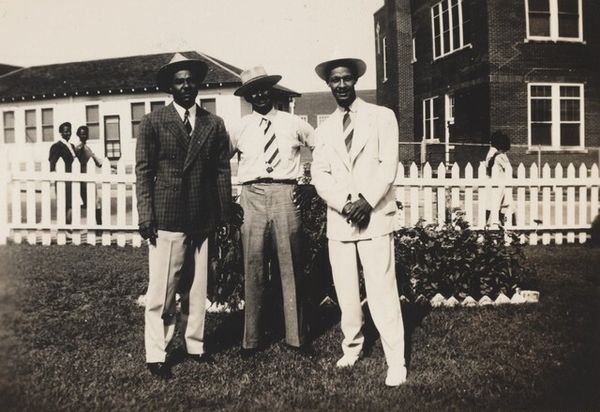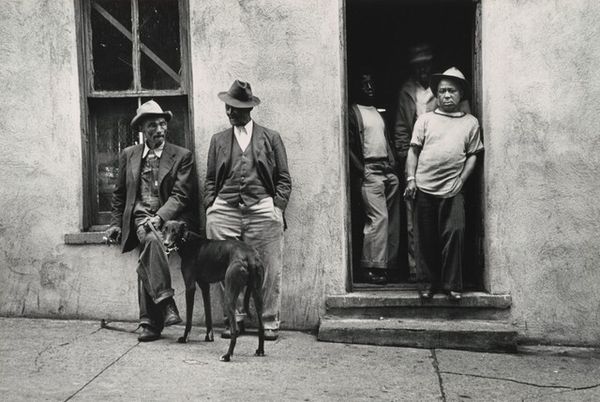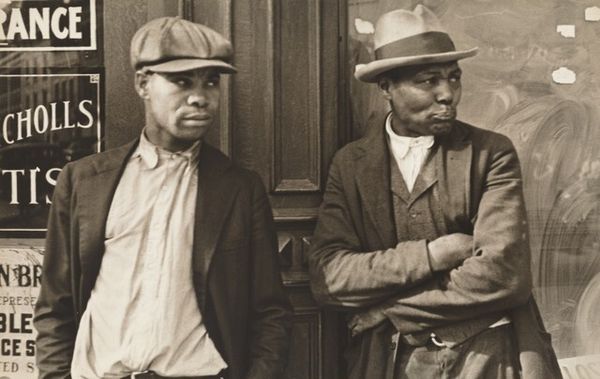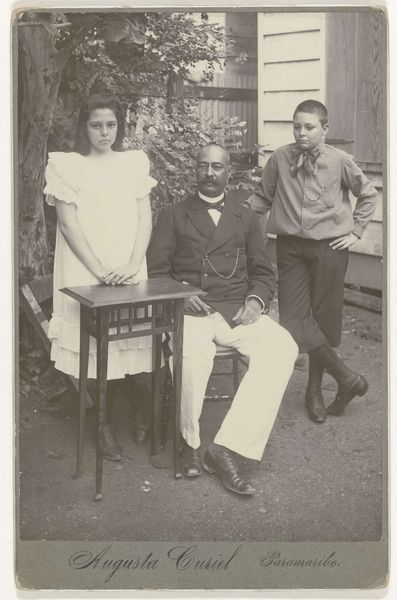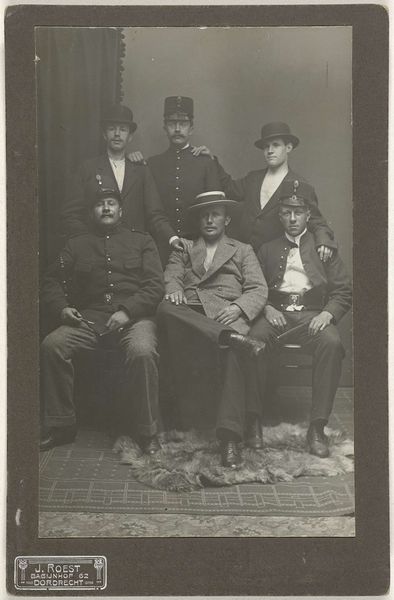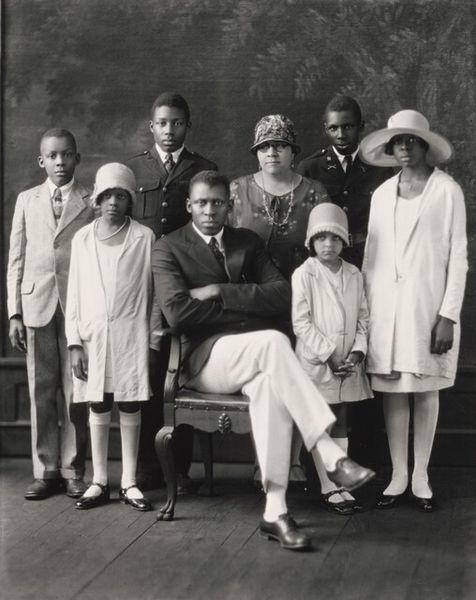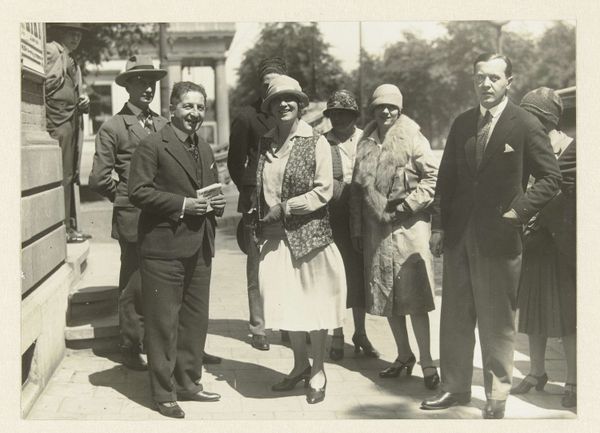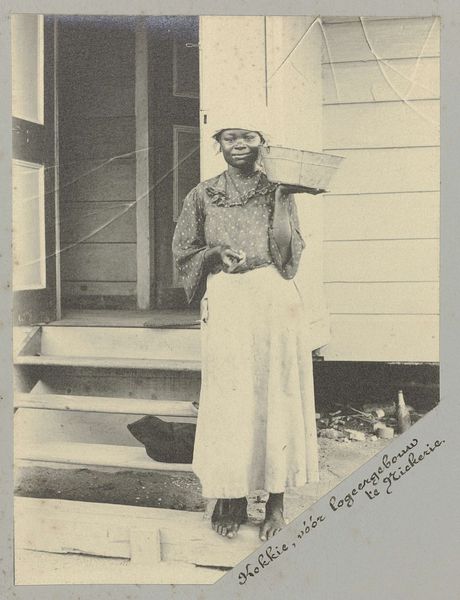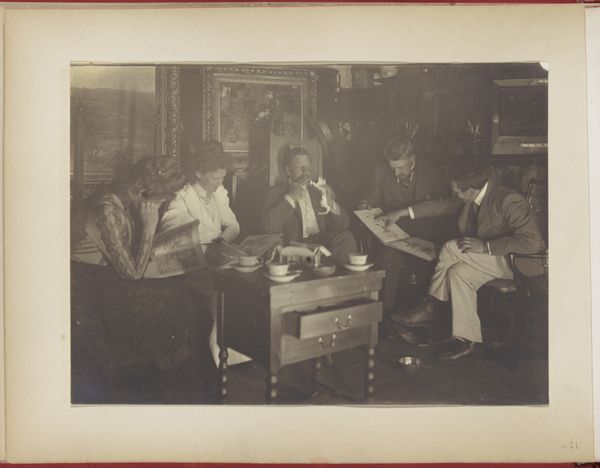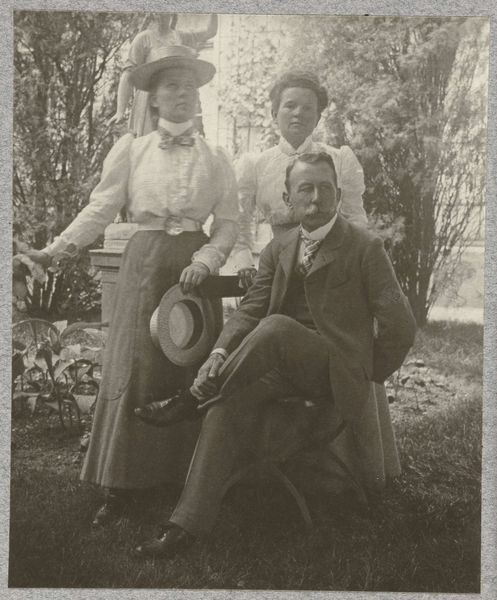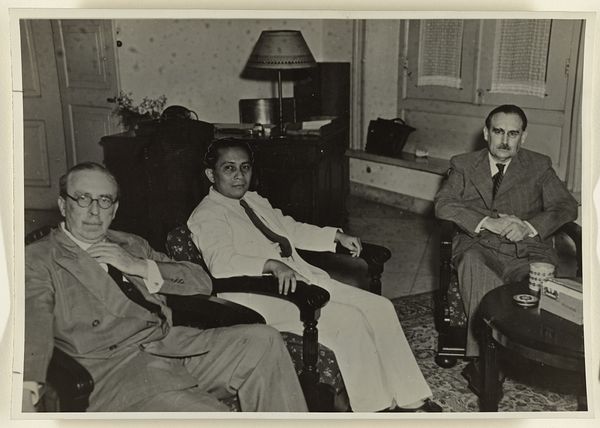
Marcus Garvey with George O. Marke and Prince Kojo Tovalou-Houénou 1924
0:00
0:00
Dimensions: image/sheet: 12.8 × 18.1 cm (5 1/16 × 7 1/8 in.)
Copyright: National Gallery of Art: CC0 1.0
Editor: This is a photograph by James Van Der Zee, "Marcus Garvey with George O. Marke and Prince Kojo Tovalou-Houénou," taken in 1924. It’s a gelatin silver print, and it strikes me as a very deliberate and carefully constructed image, almost staged in its formality. What do you see in this photograph, beyond the obvious? Curator: Well, beyond being a striking group portrait, this image encapsulates a pivotal moment in the Harlem Renaissance and the broader Pan-African movement. Van Der Zee, through his studio portraits, actively shaped the visual representation of Black identity and success. This particular image places Marcus Garvey, a hugely controversial but also inspiring figure, alongside other leaders. Editor: So it's not just a portrait, but a visual statement? Curator: Exactly! Consider the setting – probably Van Der Zee's studio, designed to project a sense of dignity and respectability. The men are sharply dressed, exuding power. How does this imagery contribute to the politics of representation, do you think, especially at this time? Editor: It seems to directly challenge negative stereotypes and assert Black agency. They’re presenting themselves as leaders, demanding to be seen as such. The deliberate composition underlines that. Curator: Precisely. And consider how this image, reproduced and circulated, influenced perceptions of the movement itself. The photograph becomes a tool for social and political change, influencing the narrative. It begs the question: how conscious was Van Der Zee of the impact his portraits would have on shaping the public image of this era? Editor: It makes you think about the power of photography not just to record, but to actively construct history. The image now tells the tale. Curator: Indeed. This photograph makes us reflect on art’s public role and visual representation, particularly during times of significant social and political change.
Comments
No comments
Be the first to comment and join the conversation on the ultimate creative platform.
